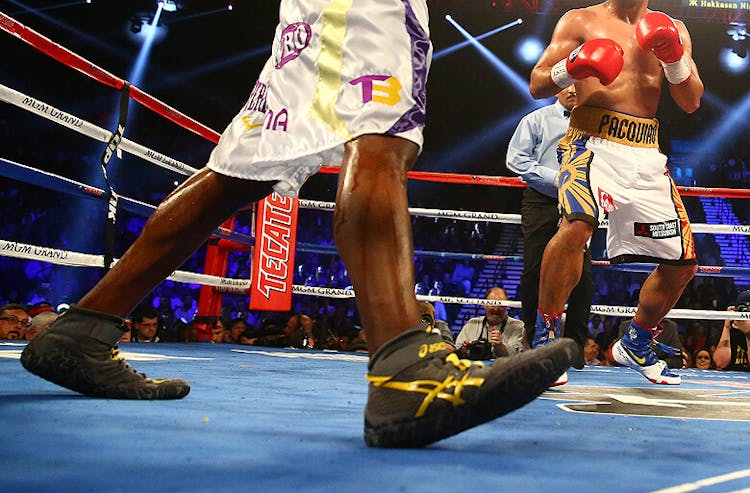Boxing has been synonymous with betting odds for as long as fighters have been throwing punches. While the sport may not be as mainstream as it once was, it is still a popular market for sports betting odds and draws global attention for some of the bigger championship prize fights.
If you’re going toe-to-toe with the boxing betting odds for the first time or just need to brush up on the basics, here are some simple tips and tactics to help you handicap “The Sweet Science”.
Styles and stance
Boxers come in all shapes and sizes, and styles as well. Some fighters really on power punching and look to push their opponent from the opening bell, trying to score a quick knockdown and put their foe on the ropes. Other fighters are defensive focused, aiming for counter-punching opportunities and fighting a more patient style that draws in opponents and capitalizes on their mistakes. Some boxers are dependent on their speed and football, attempting to out-point their rival with quick jabs but not necessarily looking to score a knockout blow.
Knowing each boxer’s style and how they compare and contrast to that of their opponent will help boxing bettors find value in the betting odds, either playing on a certain boxer or wagering on markets like Over/Under round totals and method of victory.
Boxing bettors should always be wary of stance – orthodox or southpaw – as some fighters have troubles with left-handed or southpaw fighters. There are more right handed or orthodox fighters, so sparring partners and past opponents are most often orthodox stances, making it tougher to adjust to a southpaw opponent.
Weight and reach
Boxing has multiple weight classes and fighters will move up and down in weight depending on success and competition. Some fighters are able to cut and maintain weight better than some, while others – especially those moving down in class – have a harder time making it under the limit.
Bettors should be mindful of fighters that struggle to make weight and their progress leading up to a fight. Weigh-ins are scheduled the day before a fight and those close to missing the cut can go through drastic measures to make sure they don’t tip the scales, including starving and dehydrating themselves. Late weight cuts can leave those fighters drained before the bell even rings.
Some fighters walk around much heavier than their designated weight class and can quickly bulk back up after a weigh-in, giving them an advantage against possibly smaller foes. Bettors should always be mindful of a fighter’s true weight class and that of their opponent.
Reach – the length of a fighter’s arm – is another key factor in handicapping boxing betting odds. A fighter with a longer reach can connect on more strikes without putting themselves too close to an opponent. Mismatches in reach should be stacked up with style matchups, finding boxers who can use their longer reach to land shots and limit their opponent’s chances.
Records and boxing math
A fighter’s record is one of the first pieces of data bettors look at when sizing up the betting odds, but it’s also already factored into the odds. Records can sometimes be deceiving, as it’s impossible to find out the quality of opponents simply by looking at the wins and losses.
Bettors will want to take a deeper dive into those results, seeing that perhaps a fighter’s losses have come in closely-contested bouts against elite-level opponents while their opponent has built an impressive resume but has done so against inferior competition. Those fighters who have been tested are often more prepared and can adapt quicker throughout a fight than one that has yet to be really challenged.
Often times, bettors like to compare the record of two opponents. Inside a particular weight class, there is a lot of crossover in terms of opposition. One fighter may have lost to a past opponent that their current foe has defeated. Plenty of fight fans want to do what is known as “Boxing Math”: Fighter A lost to Fighter C, but Fighter B beat Fighter C. So Fighter B should beat Fighter A when they meet. That’s rarely the case and this thought process can mislead boxing bettors.
Ring rust, injuries, and KOs
Boxing is a combat sport so it comes with its share of injuries. These can sideline a fighter for a few weeks, months, or even years. Bettors will want to look into how these injuries impact a fighter upon their return to the ring, getting as much information from training camp reports and the media. Does something like a knee injury impact their quickness in the ring and how dependent is that fighter on that injured area? Will their upcoming opponent look to exploit that injured area?
Injuries as well as contract negotiations and fight cancellations can put extended time between fights for some athletes. Boxing bettors will want to consider the popular “ring rust” angle, seeing how that hiatus from in-ring action has impacted a fighter: have they been training and sparring all year? Are they in shape?
Knockout losses can also have a similar effect on fighters. While they may not have suffered physical injury due to a devastating KO defeat, they can become damaged mentally. Fighters coming off a knockout loss can become extra cautious and lose their edge inside the ring, drastically changing their approach and style. Boxing bettors should also beware of these situations when capping a fighter coming off a bad KO.




















